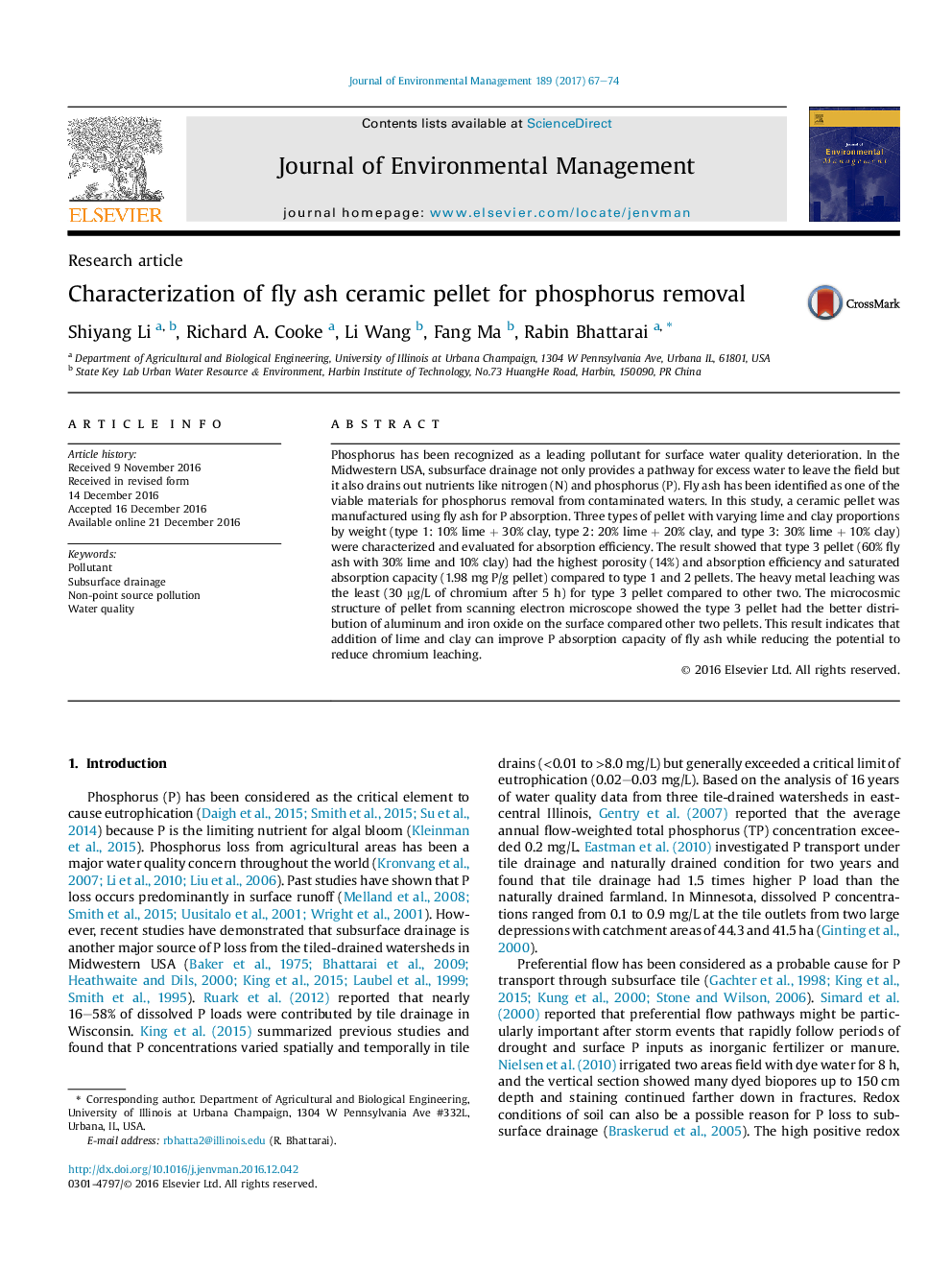| کد مقاله | کد نشریه | سال انتشار | مقاله انگلیسی | نسخه تمام متن |
|---|---|---|---|---|
| 5117064 | 1485226 | 2017 | 8 صفحه PDF | دانلود رایگان |
• Removal of dissolved P by fly ash ceramic pellet was examined.
• Addition of lime and clay improved the P absorption efficiency of fly ash pellets.
• The optimal removal efficiency was obtained at 30% lime under high pH condition.
• Heavy metal leaching can be restricted by alkaline additive and thermal treatment.
Phosphorus has been recognized as a leading pollutant for surface water quality deterioration. In the Midwestern USA, subsurface drainage not only provides a pathway for excess water to leave the field but it also drains out nutrients like nitrogen (N) and phosphorus (P). Fly ash has been identified as one of the viable materials for phosphorus removal from contaminated waters. In this study, a ceramic pellet was manufactured using fly ash for P absorption. Three types of pellet with varying lime and clay proportions by weight (type 1: 10% lime + 30% clay, type 2: 20% lime + 20% clay, and type 3: 30% lime + 10% clay) were characterized and evaluated for absorption efficiency. The result showed that type 3 pellet (60% fly ash with 30% lime and 10% clay) had the highest porosity (14%) and absorption efficiency and saturated absorption capacity (1.98 mg P/g pellet) compared to type 1 and 2 pellets. The heavy metal leaching was the least (30 μg/L of chromium after 5 h) for type 3 pellet compared to other two. The microcosmic structure of pellet from scanning electron microscope showed the type 3 pellet had the better distribution of aluminum and iron oxide on the surface compared other two pellets. This result indicates that addition of lime and clay can improve P absorption capacity of fly ash while reducing the potential to reduce chromium leaching.
Journal: Journal of Environmental Management - Volume 189, 15 March 2017, Pages 67–74
